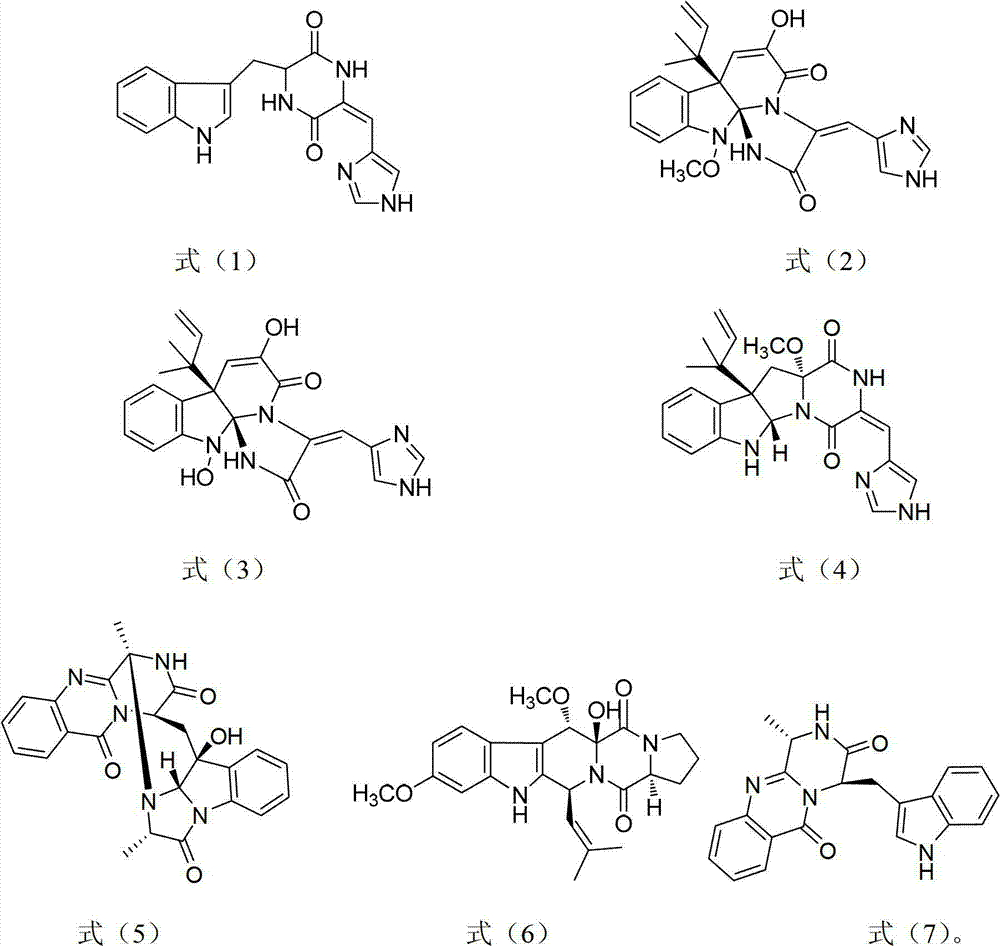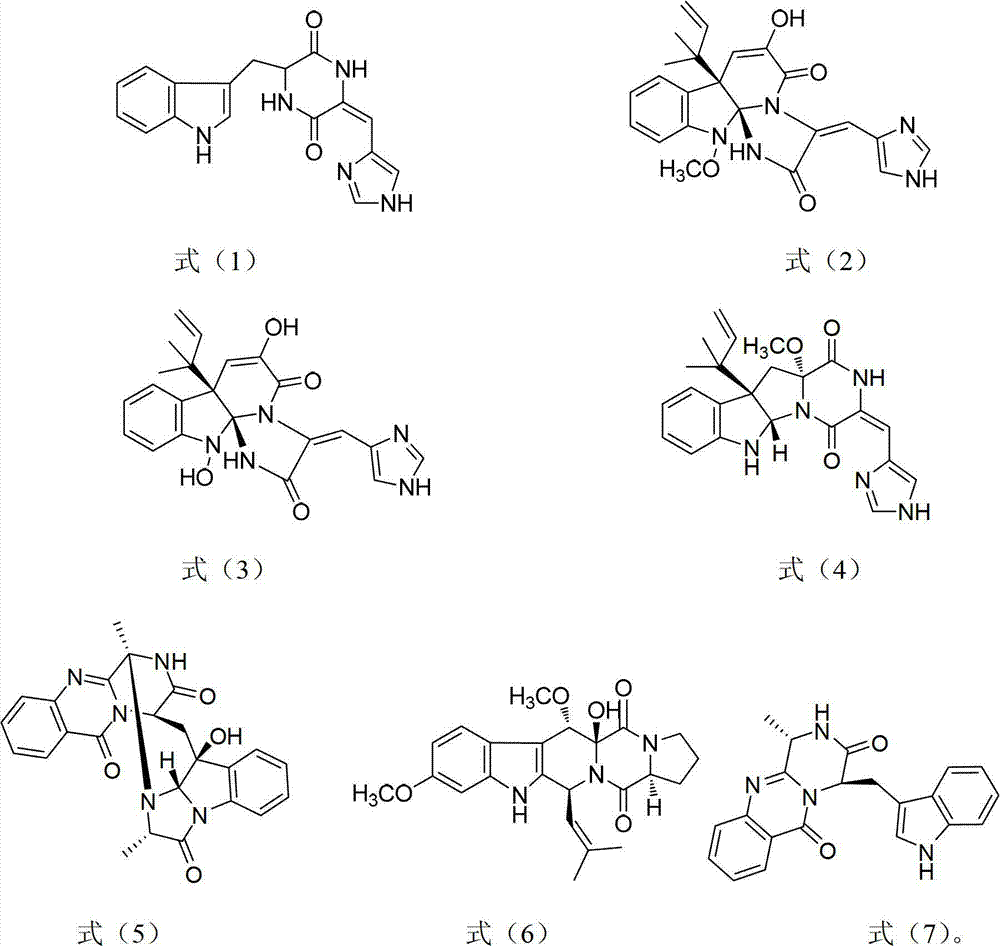Application of class of indole alkaloids to preparation of marine biofouling prevention coating material
A marine biofouling and indole alkaloid technology, which is applied in the application field of indole alkaloids in the preparation of anti-marine biofouling coatings, can solve the problems of low release rate, destroy blood cells, destroy ecological balance and the like, and achieve good lipophilic effect
- Summary
- Abstract
- Description
- Claims
- Application Information
AI Technical Summary
Problems solved by technology
Method used
Image
Examples
Embodiment 1
[0015] Example 1: Anti-adhesion activity test of marine macrofouling organism barnacle larvae of indole alkaloid compounds represented by formula (1)-formula (4)
[0016] The activity test model is the attachment inhibition test of Barnacles larvae, one of the most commonly used marine fouling biological models in laboratories. Adult barnacles feed on Chaetoceros gracilis Schutt, and culture barnacle nauplii to Venus larva stage in 0.22 μm filtered seawater with 2 larvae per milliliter at 28°C. Activity tests were carried out with the resulting Venus stage larvae. Anti-larval settling activity of compounds was determined using 24-well polystyrene plates. Dissolve the pure product of compound (E)-3-(1H-imidazole-4-yimethylene)-6-(1H-indl-3-ylmethyl)-2,5-piperazinediol (Formula 1) in DMSO and filter with sterile Seawater was diluted into solutions of different concentrations (60–140 μg / mL) as test solutions. Add 1mL test solution and 20±2 mature barnacle larvae to each well, ...
Embodiment 2
[0019] Example 2: Anti-adhesion activity test of indole alkaloid compounds represented by formula (5) to formula (7) against the attachment of larvae of marine macrofouling organisms
[0020] The activity test model adopts the attachment inhibition test of Bugula neritina, one of the most commonly used marine fouling biological models in the laboratory. The collected mature B. multiloculum was placed in seawater filtered with a 0.22 μm filter membrane, stimulated with light, and the larvae produced by the mature B. multiloculum stimulated by light were collected. Larvae were placed in a watch glass containing seawater filtered through a 0.22 μm filter membrane. The activity test was done with the larvae produced by Bryosa larvae by light. Anti-larval settling activity of compounds was determined using 24-well polystyrene plates. The compound fumiquinazoline D (formula 5) was dissolved in DMSO, and diluted with sterile filtered seawater to obtain different concentration solut...
PUM
 Login to View More
Login to View More Abstract
Description
Claims
Application Information
 Login to View More
Login to View More - R&D
- Intellectual Property
- Life Sciences
- Materials
- Tech Scout
- Unparalleled Data Quality
- Higher Quality Content
- 60% Fewer Hallucinations
Browse by: Latest US Patents, China's latest patents, Technical Efficacy Thesaurus, Application Domain, Technology Topic, Popular Technical Reports.
© 2025 PatSnap. All rights reserved.Legal|Privacy policy|Modern Slavery Act Transparency Statement|Sitemap|About US| Contact US: help@patsnap.com


